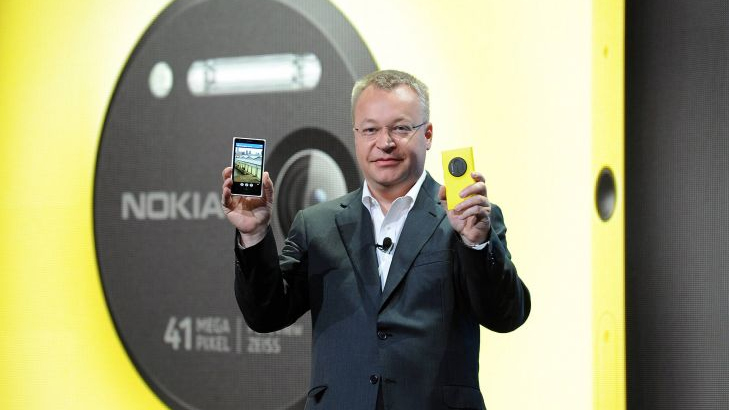Can Nokia teach Microsoft to be one company?
Buying Nokia makes Microsoft much stronger in devices
That's as good a definition of the promise of devices and services as Microsoft has ever given, and it's something Nokia has been doing itself – especially with Here Maps and Lumia handsets.
Elop also has experience of the way Microsoft can improve in one area by learning from its own products in other areas; something that's key to making the 'one Microsoft' reorg succeed. Again, in 2009, he pointed out that "Xbox is cool but when you play around it there is all sorts of stuff you learn from it – and what we learn from enterprise search transfers to the Live team."
Microsoft had bought FAST to improve SharePoint search (both part of Elop's division) but the same expertise turned the disappointing Live Search into the much more effective Bing search engine.
What Microsoft must do next
Microsoft needs to do much more of that transfer between teams – and it needs to keep moving away from its tendency to Redmond insularity. Both companies have spoken in the past about how well their design ethos and ambitions match up and the Windows Phone tem has managed to work well with the Nokia teams in Finland.
Unlike Microsoft, which builds every service for the US first and the rest of the world much later, Nokia is hardly a US-centric company; it's used to building services for other countries around the world – the countries where Windows Phone is actually selling. Bing Maps is very accurate in the US but try searching for businesses in London using Bing Maps and Here Maps on Windows Phone; Nokia has a far better database of locations and you're much more likely to find what you're looking for.
The 30,000 Nokia employees who become Microsoft employees won't be moving to Redmond; they'll stay in Finland where they design the phones and in Silicon Valley where Nokia has its research labs – and in the production facilities around the world where they build phones.

Using Nokia's expertise to sell other devices
Nokia has decades of experience in building phones – and in running a supply chain that sources components, builds things like the image stabilisation modules that make the cameras in the Lumia 920, 925 and 1020 so good, manufactures the devices and then gets them into stores.
Sign up to the TechRadar Pro newsletter to get all the top news, opinion, features and guidance your business needs to succeed!
Microsoft has spent a lot of money building up its own supply chain for building the Surface tablets, but it was slow to make devices available outside the US; Nokia has that scale already. It's also used to working on multiple devices at once; Microsoft didn't have a large enough team to design Surface and Surface Pro at the same time, let alone get a smaller tablet ready to compete with the iPad Mini and Nexus 7.
To compete in devices Microsoft needs to move faster; having one division rather than two separate companies should help there. It also needs to learn to sell products better and get marketing working better with the product teams.
Nokia still has strong relationships with mobile operators around the world, a sales team that Microsoft doesn't have – and far better marketing. From genuinely funny ads like the wedding fight to guerrilla campaigns like paring ad vans next to Samsung billboards, Nokia can teach Microsoft to sell its products.
Can Microsoft really save money over the deal?
Microsoft says it will also save money, not just from the extra efficiency and scale but also from the 60-plus patent licenses from companies like IBM and Motorola Nokia is handing over, which have what Microsoft calls "attractive royalty arrangements" – and Microsoft can use them for tablets and other devices as well as phones.
Plus the deal means Google-owned Motorola can't sue Microsoft over smartphones in future for any of those patents; neither can companies like Samsung and LG who have already cross licenced patents to Microsoft.
Not everything in the Microsoft Nokia deal fits in with the 'one Microsoft' plan though. As well as the Lumia handsets, Microsoft is taking over Nokia's Asha Symbian phones and featurephones like the newly launched Nokia 515.
Microsoft has only just finished transitioning Windows Phone and Xbox to the Windows kernel and now it's going to have multiple platforms again – in a market where it has little experience and none of it good. Even if Asha doesn't turn into another Sidekick or Kin – Microsoft's last phone acquisition didn't go well – it could be confusing for customers.
On the other hand, Microsoft can't afford to only develop for Windows and Windows Phone. Steve Ballmer promised that "we're not holding back services from other vendors." Making Microsoft services available on the first phone people buy as well is an opportunity to get them before they start in the Google or Apple world.
- Why not check out what we thought about Steve Ballmer stepping down as Microsoft CEO?
Mary (Twitter, Google+, website) started her career at Future Publishing, saw the AOL meltdown first hand the first time around when she ran the AOL UK computing channel, and she's been a freelance tech writer for over a decade. She's used every version of Windows and Office released, and every smartphone too, but she's still looking for the perfect tablet. Yes, she really does have USB earrings.